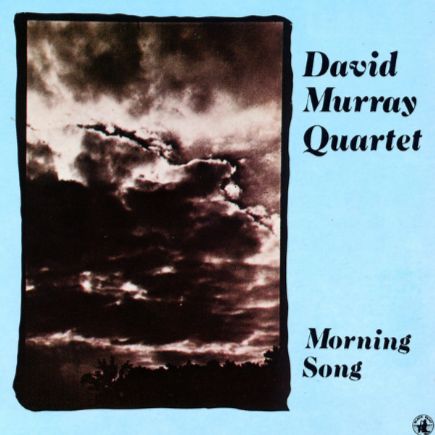Body and Soul: d’un air populaire à une pierre angulaire du jazz moderne
Composée en 1930 par Edward Heyman, avec des paroles signées Robert Sour, Frank Eyton et Johnny Green, Body and Soul fut initialement destinée à l’actrice et chanteuse britannique Gertrude Lawrence. Rapidement reprise par Libby Holman dans la revue Three’s a Crowd, elle s’est ensuite frayée un chemin jusqu’au grand écran dans le film de boxe Body and Soul, avec John Garfield en tête d’affiche.
Mais c’est en 1939 que la chanson bascule véritablement dans l’histoire du jazz. Le saxophoniste ténor Coleman Hawkins en livre une version saisissante, entièrement repensée. Ce geste artistique radical ouvre une nouvelle voie: il rompt avec les conventions du jazz swing et amorce, avec audace, l’émergence de l’esthétique bebop.
Depuis cet enregistrement fondateur, Body and Soul s’est imposée comme un standard incontournable, revisité par des centaines d’artistes à travers le monde, tant en version instrumentale que vocale.
David Murray Quartet, une relecture habitée d’un standard intemporel
Enregistrée à New York entre le 25 et le 30 septembre 1983 pour l’album Morning Song, la version de Body and Soul par le quartet de David Murray s’impose comme l’une des plus vibrantes relectures modernes de ce standard mythique. Entouré de John Hicks au piano, Reggie Workman à la basse et Ed Blackwell à la batterie, le saxophoniste ténor explore les profondeurs expressives d’une mélodie immortelle en mêlant ferveur émotionnelle et audace formelle.
Le phrasé de Murray oscille entre lyrisme écorché et envolées fulgurantes, dessinant une trajectoire où le standard devient matière vivante, réinterrogée à chaque instant. John Hicks, ancré dans une tradition post-bop affirmée, tisse un accompagnement à la fois harmonique et poétique, et Reggie Workman, ancien compagnon de Coltrane, soutient l’ensemble d’un jeu profondément chantant Quant à Ed Blackwell, il apporte cette pulsation fluide, mobile, imprévisible, héritée d’Ornette Coleman, qui transforme chaque reprise de thème en renaissance.
Body and Soul: de canción popular a piedra angular del jazz moderno
Compuesta en 1930 por Edward Heyman, con letra de Robert Sour, Frank Eyton y Johnny Green, Body and Soul fue escrita originalmente para la actriz y cantante británica Gertrude Lawrence. Poco después, Libby Holman la interpretó en la revista musical Three’s a Crowd, y más tarde la canción llegó al cine en la película de boxeo Body and Soul, protagonizada por John Garfield.
Pero fue en 1939 cuando la pieza entró realmente en la historia del jazz. El saxofonista tenor Coleman Hawkins ofreció una versión impactante, completamente reinventada. Ese gesto artístico, audaz y visionario, rompió con las convenciones del swing y marcó el inicio de una nueva estética: el bebop.
Desde esa grabación fundacional, Body and Soul se ha convertido en un estándar imprescindible, interpretado por cientos de músicos en todo el mundo, tanto en versiones instrumentales como vocales.
David Murray Quartet, una reinterpretación profunda de un estándar atemporal
Grabada en Nueva York entre el 25 y el 30 de septiembre de 1983 para el álbum Morning Song, la versión de Body and Soul del cuarteto de David Murray se impone como una de las relecturas modernas más vibrantes de este estándar mítico. Acompañado por John Hicks al piano, Reggie Workman al contrabajo y Ed Blackwell a la batería, el saxofonista tenor explora las profundidades expresivas de una melodía inmortal, combinando fervor emocional y audacia formal.
El fraseo de Murray oscila entre un lirismo desgarrado y arrebatos fulgurantes, trazando una trayectoria en la que el estándar se convierte en materia viva, replanteada a cada instante. John Hicks, arraigado en una tradición post-bop sólida, teje un acompañamiento tanto armónico como poético, mientras Reggie Workman, antiguo compañero de Coltrane, sostiene el conjunto con un toque profundamente melódico. Por su parte, Ed Blackwell aporta una pulsación fluida, móvil e imprevisible, heredada de Ornette Coleman, que transforma cada retorno al tema en un renacimiento.
Body and Soul: da melodia popolare a pietra miliare del jazz moderno
Composta nel 1930 da Edward Heyman, con testo di Robert Sour, Frank Eyton e Johnny Green, Body and Soul fu inizialmente pensata per l’attrice e cantante britannica Gertrude Lawrence. Poco dopo venne interpretata da Libby Holman nella rivista musicale Three’s a Crowd, per poi arrivare al grande schermo nel film di pugilato Body and Soul, con John Garfield come protagonista.
È però nel 1939 che la canzone entra davvero nella storia del jazz. Il sassofonista tenore Coleman Hawkins ne offre una versione straordinaria e profondamente rielaborata. Questo gesto artistico audace rompe con le convenzioni dello swing e segna l’inizio di una nuova estetica: il bebop.
Da quella registrazione fondamentale in poi, Body and Soul è diventata uno standard imprescindibile, reinterpretato da centinaia di musicisti in tutto il mondo, sia in versione strumentale che vocale.
David Murray Quartet, una rilettura intensa di uno standard senza tempo
Registrata a New York tra il 25 e il 30 settembre 1983 per l’album Morning Song, la versione di Body and Soul del quartetto di David Murray si impone come una delle reinterpretazioni moderne più vibranti di questo standard leggendario. Accompagnato da John Hicks al pianoforte, Reggie Workman al contrabbasso ed Ed Blackwell alla batteria, il sassofonista tenore esplora le profondità espressive di una melodia immortale, fondendo fervore emotivo e audacia formale.
La frase musicale di Murray oscilla tra un lirismo intenso e slanci improvvisi, delineando un percorso in cui lo standard diventa materia viva, costantemente reinventata. John Hicks, radicato in una solida tradizione post-bop, intesse un accompagnamento al tempo stesso armonico e poetico, mentre Reggie Workman, già compagno di Coltrane, sostiene l’insieme con un gioco profondamente cantabile. Ed Blackwell, infine, porta quella pulsazione fluida, mobile e imprevedibile, ereditata da Ornette Coleman, che trasforma ogni ripresa del tema in una rinascita.
Body and Soul: from popular tune to cornerstone of modern jazz
Composed in 1930 by Edward Heyman, with lyrics by Robert Sour, Frank Eyton, and Johnny Green, Body and Soul was originally written for British actress and singer Gertrude Lawrence. It soon gained popularity through Libby Holman’s performance in the revue Three’s a Crowd, and later appeared on the big screen in the boxing film Body and Soul, starring John Garfield.
But it was in 1939 that the song truly entered jazz history. Tenor saxophonist Coleman Hawkins delivered a striking, fully reimagined version. This bold artistic move broke away from swing conventions and signaled the rise of a new jazz aesthetic: bebop.
Since that landmark recording, Body and Soul has become an essential standard, reinterpreted by hundreds of artists worldwide, in both instrumental and vocal renditions.
David Murray Quartet, a soulful reimagining of a timeless standard
Recorded in New York between September 25 and 30, 1983, for the album Morning Song, David Murray’s quartet version of Body and Soul stands as one of the most vibrant modern reinterpretations of this legendary standard. Joined by John Hicks on piano, Reggie Workman on bass, and Ed Blackwell on drums, the tenor saxophonist delves into the expressive depths of an immortal melody, blending emotional fervor with formal daring.
Murray’s phrasing moves between raw lyricism and blazing flights, shaping a trajectory where the standard becomes living matter, constantly reimagined. John Hicks, rooted in a confident post-bop tradition, weaves an accompaniment that is both harmonic and poetic, while Reggie Workman, a former Coltrane collaborator, anchors the ensemble with a deeply singing tone. Ed Blackwell contributes his fluid, mobile, and unpredictable pulse—an inheritance from Ornette Coleman—that turns each return to the theme into a rebirth.


